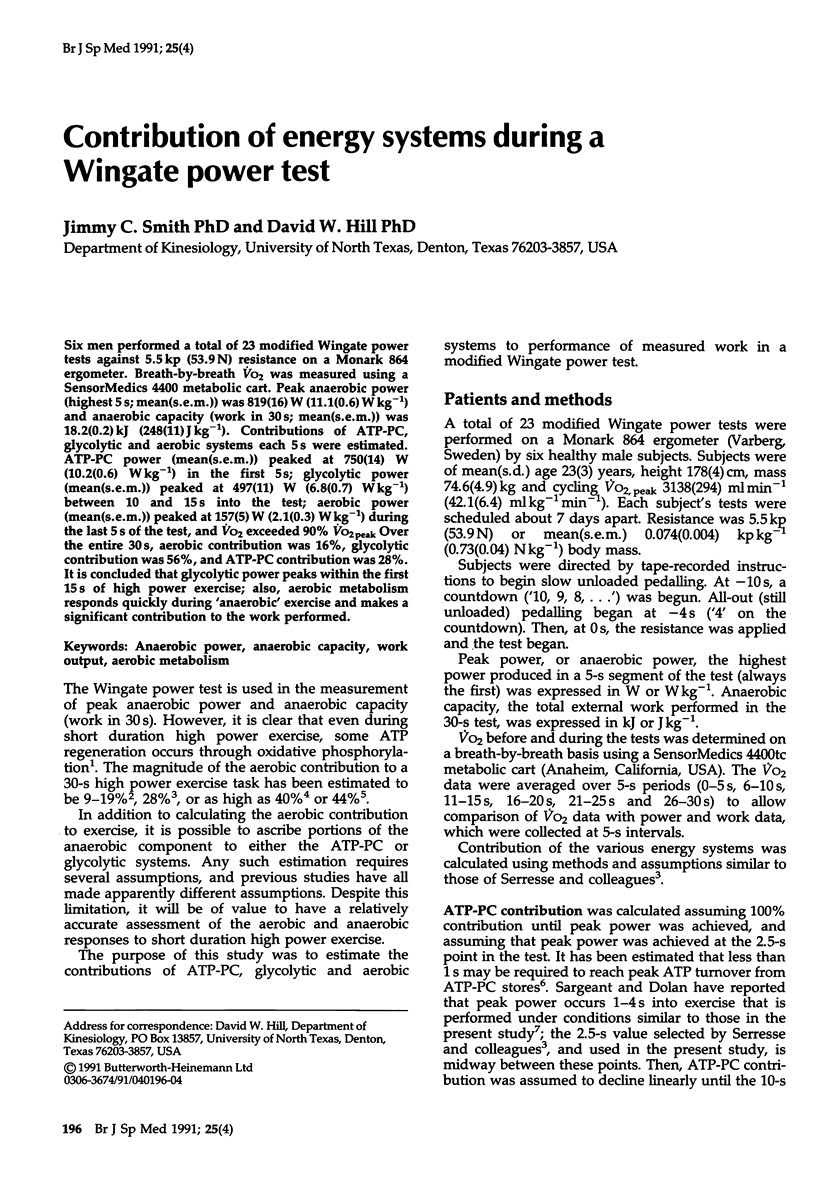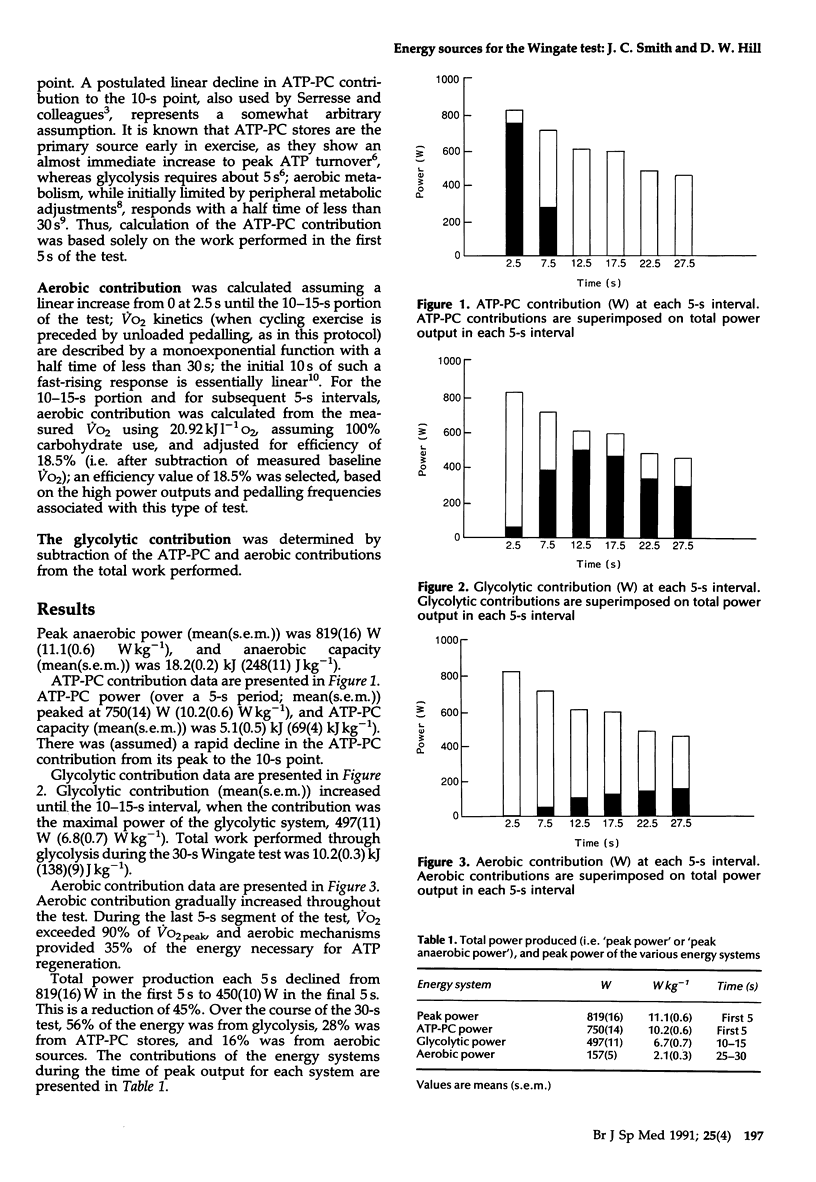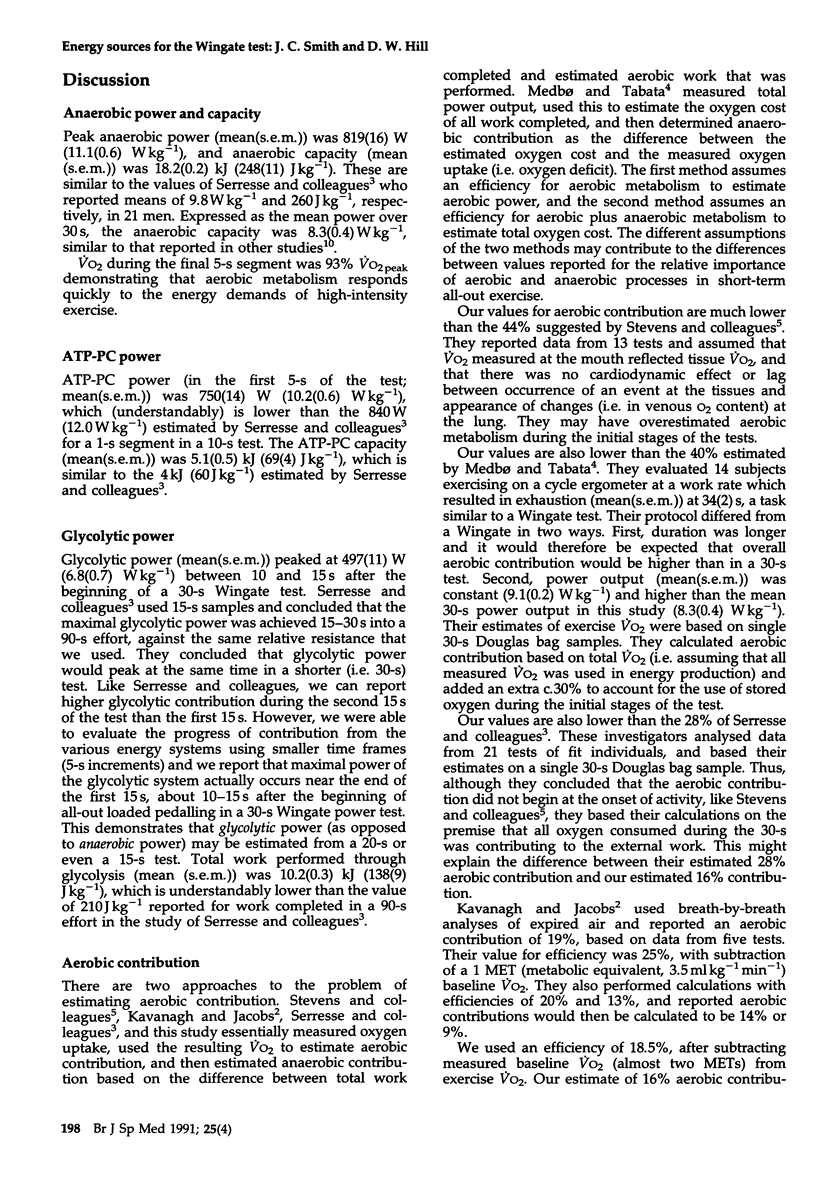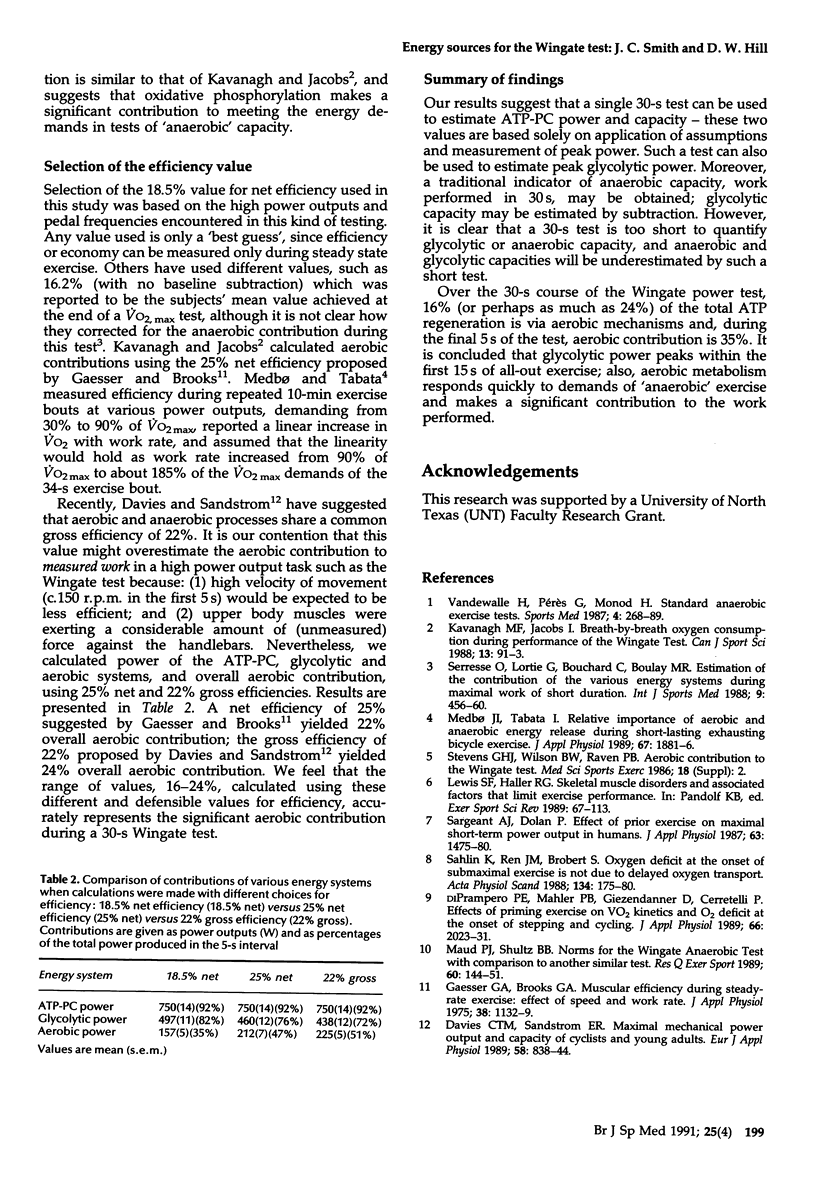Abstract
Six men performed a total of 23 modified Wingate power tests against 5.5 kp (53.9 N) resistance on a Monark 864 ergometer. Breath-by-breath VO2 was measured using a SensorMedics 4400 metabolic cart. Peak anaerobic power (highest 5 s; mean(s.e.m.)) was 819(16) W (11.1(0.6) W kg-1) and anaerobic capacity (work in 30 s; mean(s.e.m.)) was 18.2(0.2) kJ (248(11) J kg-1). Contributions of ATP-PC, glycolytic and aerobic systems each 5 s were estimated. ATP-PC power (mean(s.e.m.)) peaked at 750(14) W (10.2(0.6) W kg-1) in the first 5 s; glycolytic power (mean(s.e.m.] peaked at 497(11) W (6.8(0.7) W kg-1) between 10 and 15 s into the test; aerobic power (mean(s.e.m.)) peaked at 157(5) W (2.1(0.3) W kg-1) during the last 5 s of the test, and VO2 exceeded 90% VO2peak Over the entire 30 s, aerobic contribution was 16%, glycolytic contribution was 56%, and ATP-PC contribution was 28%. It is concluded that glycolytic power peaks within the first 15 s of high power exercise; also, aerobic metabolism responds quickly during 'anaerobic' exercise and makes a significant contribution to the work performed.
Full text
PDF



Selected References
These references are in PubMed. This may not be the complete list of references from this article.
- Davies C. T., Sandstrom E. R. Maximal mechanical power output and capacity of cyclists and young adults. Eur J Appl Physiol Occup Physiol. 1989;58(8):838–844. doi: 10.1007/BF02332216. [DOI] [PubMed] [Google Scholar]
- Gaesser G. A., Brooks G. A. Muscular efficiency during steady-rate exercise: effects of speed and work rate. J Appl Physiol. 1975 Jun;38(6):1132–1139. doi: 10.1152/jappl.1975.38.6.1132. [DOI] [PubMed] [Google Scholar]
- Lewis S. F., Haller R. G. Skeletal muscle disorders and associated factors that limit exercise performance. Exerc Sport Sci Rev. 1989;17:67–113. [PubMed] [Google Scholar]
- Maud P. J., Shultz B. B. Norms for the Wingate anaerobic test with comparison to another similar test. Res Q Exerc Sport. 1989 Jun;60(2):144–151. doi: 10.1080/02701367.1989.10607429. [DOI] [PubMed] [Google Scholar]
- Medbø J. I., Tabata I. Relative importance of aerobic and anaerobic energy release during short-lasting exhausting bicycle exercise. J Appl Physiol (1985) 1989 Nov;67(5):1881–1886. doi: 10.1152/jappl.1989.67.5.1881. [DOI] [PubMed] [Google Scholar]
- Sahlin K., Ren J. M., Broberg S. Oxygen deficit at the onset of submaximal exercise is not due to a delayed oxygen transport. Acta Physiol Scand. 1988 Oct;134(2):175–180. doi: 10.1111/j.1748-1716.1988.tb08477.x. [DOI] [PubMed] [Google Scholar]
- Sargeant A. J., Dolan P. Effect of prior exercise on maximal short-term power output in humans. J Appl Physiol (1985) 1987 Oct;63(4):1475–1480. doi: 10.1152/jappl.1987.63.4.1475. [DOI] [PubMed] [Google Scholar]
- Serresse O., Lortie G., Bouchard C., Boulay M. R. Estimation of the contribution of the various energy systems during maximal work of short duration. Int J Sports Med. 1988 Dec;9(6):456–460. doi: 10.1055/s-2007-1025051. [DOI] [PubMed] [Google Scholar]
- Vandewalle H., Pérès G., Monod H. Standard anaerobic exercise tests. Sports Med. 1987 Jul-Aug;4(4):268–289. doi: 10.2165/00007256-198704040-00004. [DOI] [PubMed] [Google Scholar]
- di Prampero P. E., Mahler P. B., Giezendanner D., Cerretelli P. Effects of priming exercise on VO2 kinetics and O2 deficit at the onset of stepping and cycling. J Appl Physiol (1985) 1989 May;66(5):2023–2031. doi: 10.1152/jappl.1989.66.5.2023. [DOI] [PubMed] [Google Scholar]


